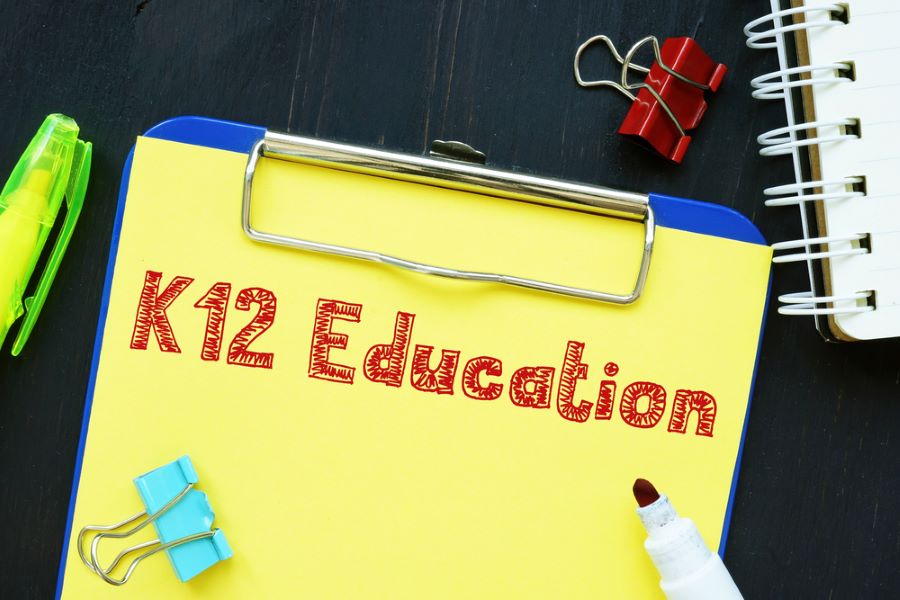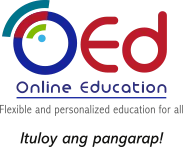
Education is the cornerstone of society. Through education, individuals gain the knowledge and skills to navigate the world around them, think critically, and make informed decisions, which are essential for personal and professional growth.
In the Philippines, a good and solid educational foundation helps individuals improve their socio-economic status. Filipinos have always believed that finishing one’s studies opens doors to better job opportunities, leading to higher income and a better quality of life. And as parents, it’s only natural that you want to give your children access to quality education so they can have a bright future.
However, one of the most pressing concerns for families today is the rising school fees in Philippines. With inflation and economic shifts, it’s becoming increasingly important to understand how much you need to allocate and prepare for your child’s academic future.
In this blog, we aim to further explore the cost of education in the Philippines and how much you need to save for school fees. We’ll also offer practical tips on how to fund education in the Philippines. Let’s get started.
Philippines Education Cost: Tuition Fees and Other Expenses
Tuition fees are the payments required for students to enroll in educational institutions, such as schools, colleges, and universities. These fees cover the cost of instruction and other educational services. The price is determined by various factors, including:
- Type and level of program
- Location and reputation of the institution
- Demand and supply of the market
- Availability of public funding
- Socio-economic status of the students
- Inflation
Public School vs. Private School
In the Philippines, there are primarily two kinds of educational institutions: public and private schools. Public schools are funded by the government, so all students can attend for free. Parents only need to worry about expenses for food, school supplies, and transportation in the long run when they enroll their children in public schools.
On the other hand, private schools are not funded by the government but follow much the same curriculum as public schools. Private schools often have updated facilities, smaller class sizes, and supplementary programs. These make tuition fees in private schools more expensive.
Let’s break down tuition fees so you can make an informed decision and better navigate these costs. Take note that these are costs for private schools.
K to 12 Program
The Philippines implemented its K to 12 Program in 2012 to reform basic education. The K to 12 Program covers Kindergarten and 12 years of basic education to sufficiently prepare graduates for tertiary education and beyond. The goal is to equip students with skills that will be in demand in the future as they navigate their careers.

Kindergarten, Primary Level, and Junior High School: ₱35,000 to ₱120,000
Students first undergo Kindergarten, then six years of primary education (Grades 1 to 6) and four years of Junior High School (Grades 7 to 10). Grades 1 to 10 have an advanced, context-based, and spiral progression learning curriculum.
School fees in Philippines at these levels typically range from ₱35,000 to ₱120,000, depending on the school’s reputation, location, and facilities. Some fees may also include books, uniforms, and miscellaneous fees.
As of 2025, private schools in the Philippines are proposing tuition fee increases ranging from 3% to 12% for the upcoming school year. The main reasons for these increases include inflation and rising operational costs, such as utilities and basic commodities.
The addition of technology fees also reflects the increased integration of digital learning tools and platforms in post-pandemic education. Many schools now require students to have access to tablets, laptops, or other digital devices, along with learning management system subscriptions.
Here’s a breakdown of expenses for private schooling, on average:
| Tuition | ₱35,000 |
| Books | ₱10,000 |
| School Supplies | ₱5,000 |
| Uniform | ₱5,000 |
| Miscellaneous | ₱7,000 |
| Technology Fees | ₱5,000-₱15,000 |
Secondary/Senior High School: ₱50,000 to ₱150,000
The K-12 education system added two more years at the secondary level for both private and public schools. During the additional two years, children choose a specialized academic track according to their preferences and capabilities:
- Business, Accountancy, and Management (BAM)
- Humanities, Education, and Social Sciences (HESS)
- Science, Technology, Engineering, and Mathematics (STEM)
Here are the estimated costs for the Senior High School level:
| Tuition | ₱50,000 |
| Books | ₱15,000 |
| School Supplies | ₱7,500 |
| Uniform | ₱5,000 |
| Miscellaneous | ₱10,000 |
| Digital Resources | ₱8,000-₱20,000 |
Tertiary/College: ₱70,000 to ₱250,000+
The tertiary level or college level is the last stretch before one can officially say they have finished their studies and obtained a degree. While a college course often determines one’s career path, it’s not always the case.
There are many factors to consider when choosing a course and they can all lead to different and unexpected career trajectories. With self-reflection and thorough research, you can make a smart decision as a family and guide your children toward the right path.
College education costs have seen some of the most significant increases in 2025, with premier universities implementing tuition hikes of 8-12% compared to 2024 rates. These increases are attributed to faculty salary adjustments (which account for 70% of the increases) and operational expenses (accounting for the remaining 30%).
Here’s an overview of the estimated cost of education in the Philippines at the tertiary level:
| Tuition (per year) | ₱70,000 to ₱250,000+ |
| Books | ₱15,000 to ₱25,000 |
| School Supplies | ₱8,500 |
| Uniform | ₱5,000 |
| Miscellaneous | P15,000 |

How to Fund Education in the Philippines
Given the ballpark figures we’ve listed above, you might be thinking of how you can financially support your children. Don’t worry because there are ways you can fund their schooling.
Government Financial Assistance
The Philippine government offers financial aid such as scholarships, grants, and subsidies for students from low-income families. This type of assistance has strict screening processes and limited slots. For example, the amount of financial aid you get will depend on your family’s financial situation.
Private Scholarships and Grants
Many universities, private organizations, and corporations offer scholarships and grants based on academic merit, financial need, or specific fields of study. The process includes an assessment of your child’s previous academic performance and scores on written entrance exams.
Work-Study Programs
Some schools offer work-study programs that allow students to work part-time in their institution while studying so they can earn money to offset tuition and other fees. The setup may seem challenging, but the many benefits of working while studying help foster one’s personal and professional growth.
Loans
Loans are a quick and easy solution to funding education. You can apply for loans through online loan apps and platforms. However, it’s only a good option if you have collateral to put up as security and good credit. Make sure that you keep track of repayments to avoid penalties.

Other Tips on How to Reduce Education Costs
You can better manage your child’s educational expenses by combining effective funding options with cost-saving strategies. Here are more tips to save on education costs:
Start Saving Early
The earlier you start saving, the better. Compute your monthly income and review your expenses. Make sure that you set aside a certain amount for your child’s education. More importantly, avoid any temptation to spend that fund on something unnecessary.
Increase Income Stream
If you rely solely on the salary you get from your full-time job, it might take longer for you to build a solid college fund. You can find a part-time job or side hustle to speed things up a bit. Multiple income streams give you more room for other expenses without compromising your savings.
Opt for Online Education
In the wake of the pandemic, educational institutions have adopted online learning. Many parents and students have realized why online education is a viable and affordable option.
The benefits of online education are clear: it is incredibly accessible and convenient, with classes available anytime and anywhere via online platforms. This flexibility allows students to tailor their learning to their needs and preferences.
Additionally, online education is typically more cost-effective due to lower overhead costs. Without the need for commuting, students can also save time and money and focus entirely on their studies as long as they have a stable internet connection.
Institutions such as OEd provide flexible online education in the Philippines. We help students build a strong foundation throughout all levels of education—from grade school to college. Our students emerge as globally competent and ready to compete with graduates from universities worldwide.
With no need for transportation, food allowances, or on-campus fees, online education can be a smart choice for budget-conscious families.

Making Wise Financial Decisions on Your Child’s Education
While the costs can be significant, quality education is an investment for your child’s future. Planning financially for your child’s academic journey will always be worth it as you see them grow into well-rounded individuals. After all, nothing is more rewarding than witnessing your child thriving and happy no matter where they end up.
As the cost of education in the Philippines continues to rise, it is more important than ever to take proactive steps to fund and manage these expenses. By being financially prepared, families can confidently face the challenges of tuition and fees without compromising their children’s academic goals.
Ready to start your child’s academic journey? With OEd, your child can benefit from a flexible and personalized learning experience. Our extensive programs cover everything from core subjects to specialized fields, ensuring that students receive holistic education suited to their interests, capabilities, and career goals.
Contact us to learn more about our course offerings.
